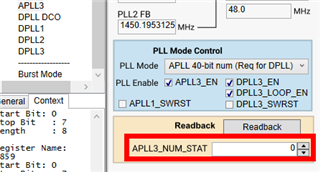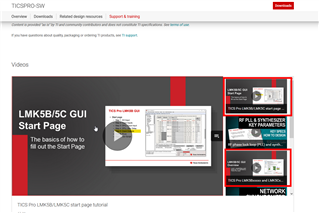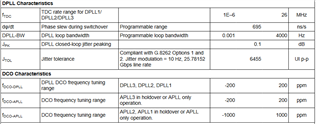- Ask a related questionWhat is a related question?A related question is a question created from another question. When the related question is created, it will be automatically linked to the original question.
This thread has been locked.
If you have a related question, please click the "Ask a related question" button in the top right corner. The newly created question will be automatically linked to this question.
Tool/software:
hi
I am using TI LMK5C33216 at my design and looking for more information regarding the phase lock mechanism, i would like understand the following:
1. where can I find more information regarding the phase lock circuit? maybe any application note?
2. in case of LOPL, does the device restart acquiring of the input similar to what is performed in case of LOFL ( move to holdover and .....).
3. For having output clock phase that is fixed to the input, I must use the ZDM, correct?
4. incase that the input clock phase is changing what will be the behavior of the output clock assuming I don't see LOPL?
Thx,
Haim
Hi Haim,
We recommend using the newer and improved version called the LMK5C33216A. This has better jitter performance and adds HCSL functionality. The pin out stays the same but there are some registers that change.
Does this help?
Regards,
Jennifer
Hi Jennifer,
thanks for the fast response.
At case that the DPLL is freq lock (LOFL=0), lets say that after some time the input clock phase move out of the threshold (LOPL=1) but freq remine the same (LOFL=0), is it correct to say that at this case nothing will happen and the input phase will transferred to the output and only in case of frequency change the device will move to holdover. is that right?
when working with ZDM and the only change will be with input clock phase, what will be the output phase ?
please advise,
Thx,
Haim
Hi Haim,
Happy New Year!
If the DPLL reference is considered a valid reference, LOFL=0, and LOPL=1 during normal operation, the DPLL will remain active and continue tracking the input. The device moves to holdover if the DPLL reference becomes invalid such as due to a missing reference or unexpected frequency measured by the device.
It is possible for the outputs to be phase locked to the input but the device still report LOPL=1. This can occur when the LOPL thresholds are low. For example, if the lock LOPL threshold is set to 1 ppm, then the LOPL status signal will not clear until the error between the DPLL input and the VCO output is less than 1 ppm. When the DPLL is active, the DPLL continuously updates the APLL numerator until a near 0 ppm error is achieved between the input and outputs.
As mentioned, the device offers ZDM to provide deterministic input to output phase relationship which means the phase error is always known even after a power down/software reset. After identifying such deterministic error, a DPLL phase offset can be applied (through register setting) to zero out the phase error between the input and output. If the DPLL is locked, but the input has a phase change, then the outputs also get the phase change so the outputs remain phase aligned to the input. Does that make sense?
Regards,
Jennifer
Hi Jennifer,
Happy new year
your answer make sense, so i would like to understand the following:
1. can I set the Jitter cleaner to ignore input clock phase change (output will not track input clock phase) and only track the input freq?
2. as you wrote the "DPLL continuously updates the APLL numerator until a near 0 ppm error is achieved between the input and outputs." can I read this value constantly?
also can I read the phase difference between input clock to DPLL measurement?
3. I didn't find at the programming guide where to set the LOPL threshold, can you point to the relevant reg ?
Regards,
Haim
Hi Haim,



Regards,
Jennifer
Hi Jennifer,
1. waiting for your feedback regarding item previous 1.
2. can you share graph that show output phase as function of the device temperature (wondering if it have any affect).
3. can you advise if all 3 DPLL have same performance.
Regards,
Haim
Hi Haim,


Regards,
Jennifer